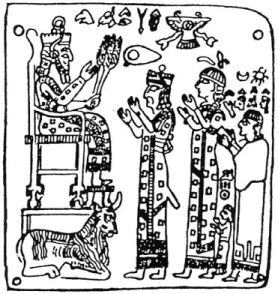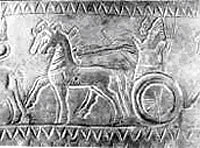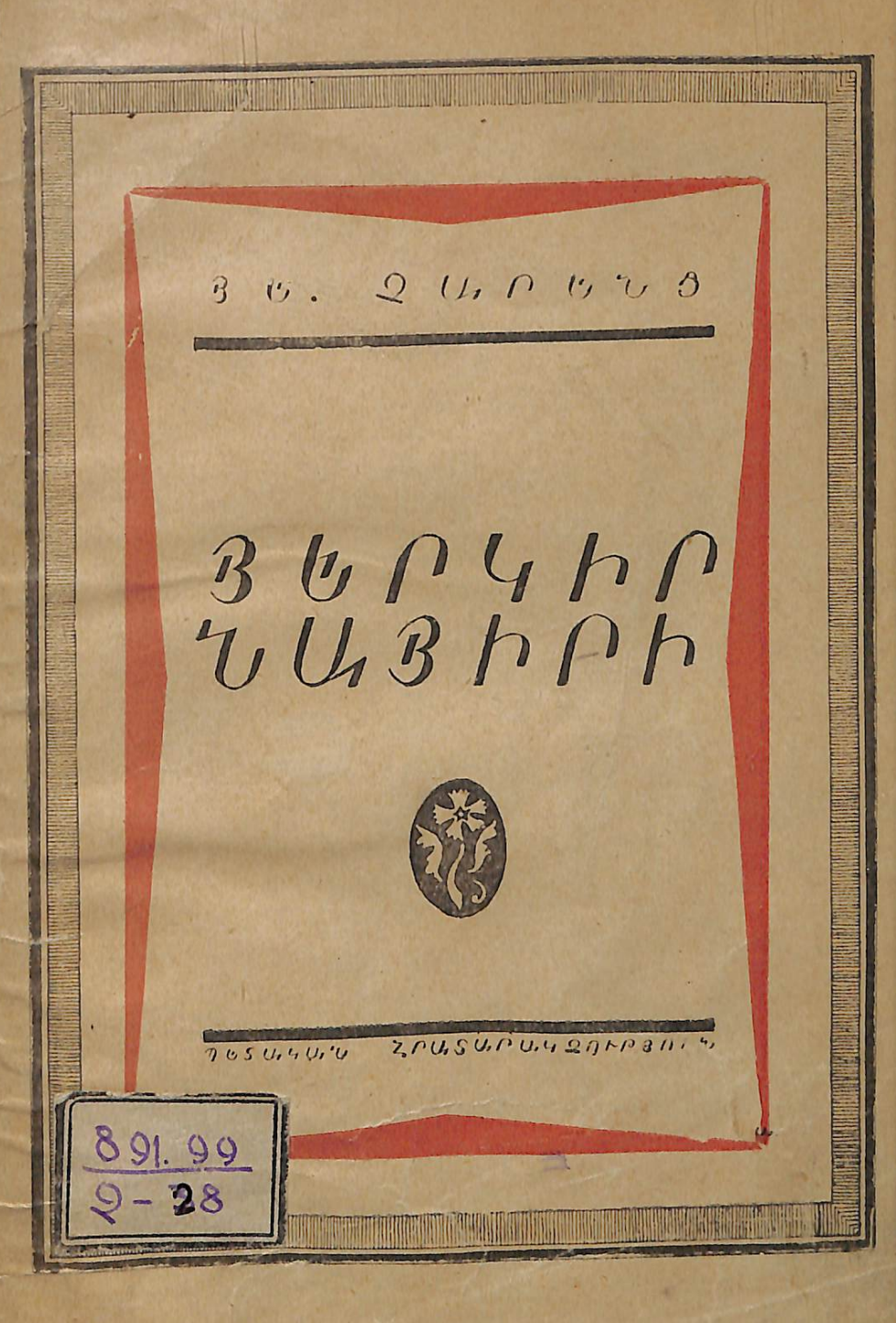|
Sarduri II
Sarduri II (ruled: 764–735 BC) was a King of Urartu, succeeding his father Argishti I to the throne. The Urartian Kingdom was at its peak during his reign, campaigning successfully against several neighbouring powers, including Assyria. Reign The succession from Sarduri II is not entirely clear. There's also attested a king Sarduri III, so Rusa may also have been his son. Sarduri II notably expanded Urartian territory by conquering the northern region of Colchis, as well as Melid and Kummuh in the Euphrates valley. Urartian sources refer to campaigns of Sarduri II against a place called "Babilu", which has sometimes been identified with Kassite regions that were formerly part of Babylonian Empire In 743 BC, at a battle located somewhere in Kummuh, the Assyrians, under Tiglath-pileser III, defeated Sarduri and his anti-Assyrian coalition, forcing the Urartians back across the Euphrates. Sarduri II was so confident in his power that he erected a massive wall at Tushpa (m ... [...More Info...] [...Related Items...] OR: [Wikipedia] [Google] [Baidu] |
List Of Kings Of Urartu
This article lists the kings of Urartu (Ararat or Kingdom of Van), an Iron Age kingdom centered on Lake Van in eastern Asia Minor. Kings See also *List of Mesopotamian dynasties References *Boris Piotrovskii, ''The Ancient Civilization of Urartu'', London, 1969. *Igor Diakonoff, ''The Pre-History of the Armenian People'', Caravan Books, New York, 1988. *M. Chahin, ''The Kingdom of Armenia'', Curzon, London, 2001. External links Urartu {{DEFAULTSORT:Kings of Urartu Kings of Urartu, Lists of monarchs in Asia, Urartu ... [...More Info...] [...Related Items...] OR: [Wikipedia] [Google] [Baidu] |
Babylonian Empire
Babylonia (; , ) was an ancient Akkadian-speaking state and cultural area based in the city of Babylon in central-southern Mesopotamia (present-day Iraq and parts of Kuwait, Syria and Iran). It emerged as an Akkadian-populated but Amorite-ruled state . During the reign of Hammurabi and afterwards, Babylonia was retrospectively called "the country of Akkad" ( in Akkadian), a deliberate archaism in reference to the previous glory of the Akkadian Empire. It was often involved in rivalry with the older ethno-linguistically related state of Assyria in the north of Mesopotamia and Elam to the east in Ancient Iran. Babylonia briefly became the major power in the region after Hammurabi (fl. –1752 BC middle chronology, or –1654 BC, short chronology) created a short-lived empire, succeeding the earlier Akkadian Empire, Third Dynasty of Ur, and Old Assyrian Empire. The Babylonian Empire rapidly fell apart after the death of Hammurabi and reverted to a small kingdom centered around th ... [...More Info...] [...Related Items...] OR: [Wikipedia] [Google] [Baidu] |
Mount Ararat
Mount Ararat, also known as Masis or Mount Ağrı, is a snow-capped and dormant compound volcano in Eastern Turkey, easternmost Turkey. It consists of two major volcanic cones: Greater Ararat and Little Ararat. Greater Ararat is the highest peak in Turkey and the Armenian highlands with an elevation of ; Little Ararat's elevation is . The Ararat massif is about wide at ground base. The first recorded efforts to reach Ararat's summit were made in the Middle Ages, and Friedrich Parrot, Khachatur Abovian, and four others made the first recorded ascent in 1829. In Europe, the mountain has been called by the name Ararat since the Middle Ages, as it began to be identified with "mountains of Ararat" described in the Bible as the resting-place of Noah's Ark, despite contention that does not refer specifically to a Mount Ararat. Although lying outside the borders of modern Armenia, the mountain is the principal national symbol of Armenia and has been considered a sacred mountain by ... [...More Info...] [...Related Items...] OR: [Wikipedia] [Google] [Baidu] |
Mannai
Mannaea (, sometimes written as Mannea; Akkadian: ''Mannai'', Biblical Hebrew: ''Minni'', (מנּי)) was an ancient kingdom located in northwestern Iran, south of Lake Urmia, around the 10th to 7th centuries BCE. It neighbored Assyria and Urartu, as well as other small buffer states between the two, such as Musasir and Zikirta. Etymology of name The name of Mannaea and its earliest recorded ruler Udaki were first mentioned in an inscription from the 30th year of the rule of Shalmaneser III (828 BC). The Assyrians usually called Manna the "land of the Mannites", Manash, while the Urartians called it the land of Manna. Describing the march of Salmanasar III in the 16th year (843 BC), it was reported that the king reached the land of Munna, occupying the interior of Zamua. However, the chronicle does not mention any march or taxation on the state of Mannaea. It is possible that the Assyrians either failed to conquer Mannaea, or advanced only to the border of Mannaea, and then ... [...More Info...] [...Related Items...] OR: [Wikipedia] [Google] [Baidu] |
Joseph Orbeli
Joseph Orbeli (, Hovsep Abgari Orbeli; ; 20 March ( O.S. 8 March) 1887 – 2 February 1961) was a Soviet-Armenian orientalist, public figure and academician who specialized in medieval history of Transcaucasia and administered the Hermitage Museum in Leningrad from 1934 to 1951. He was the founder and first president of the Armenian National Academy of Sciences (1943–47). Yuzbashyan, Karen ''«Օրբելի, Հովսեփ Աբգարի»'' rbeli, Hovsep AbgariArmenian Soviet Encyclopedia. Yerevan: Armenian Academy of Sciences, 1986, vol. 12, pp. 584–585. Biography Early life and education Born into the Orbeli family in Kutaisi, Russian Georgia in 1887, Joseph Orbeli completed his secondary education at a classical gymnasium in Tbilisi. Anon. "Հովսեփ Օրբելի" ovsep Orbeli '' Patma-Banasirakan Handes'' 12/1 (1961), pp. 229–234. In 1904, he was accepted to Saint Petersburg University. He studied history and philology (with a particular emphasis in Latin and Gree ... [...More Info...] [...Related Items...] OR: [Wikipedia] [Google] [Baidu] |
Van, Turkey
Van (; ; ) is a city in eastern Turkey's Van Province, on the eastern shore of Lake Van. It is the capital and largest city of Van Province. Van has a long history as a major urban area. It has been a large city since the first millennium BCE, initially as Tushpa, the capital of the kingdom of Urartu from the 9th century BCE to the 6th century BCE, and later as the center of the Armenian kingdom of Vaspurakan. Turkic presence in Van and in the rest of Anatolia started as a result of Seljuk victory at the Battle of Malazgirt (1071) against the Byzantine Empire. Van was densely populated by Armenians until the Armenian genocide in the 1910s. Today, it is mostly inhabited by Kurds. History Archaeological excavations and surveys carried out in Van Province indicate that the history of human settlement in this region goes back at least as far as 5000 BCE. The Tilkitepe Mound, which is on the shores of Lake Van and a few kilometres to the south of Van Castle, is the onl ... [...More Info...] [...Related Items...] OR: [Wikipedia] [Google] [Baidu] |
Sarduri II
Sarduri II (ruled: 764–735 BC) was a King of Urartu, succeeding his father Argishti I to the throne. The Urartian Kingdom was at its peak during his reign, campaigning successfully against several neighbouring powers, including Assyria. Reign The succession from Sarduri II is not entirely clear. There's also attested a king Sarduri III, so Rusa may also have been his son. Sarduri II notably expanded Urartian territory by conquering the northern region of Colchis, as well as Melid and Kummuh in the Euphrates valley. Urartian sources refer to campaigns of Sarduri II against a place called "Babilu", which has sometimes been identified with Kassite regions that were formerly part of Babylonian Empire In 743 BC, at a battle located somewhere in Kummuh, the Assyrians, under Tiglath-pileser III, defeated Sarduri and his anti-Assyrian coalition, forcing the Urartians back across the Euphrates. Sarduri II was so confident in his power that he erected a massive wall at Tushpa (m ... [...More Info...] [...Related Items...] OR: [Wikipedia] [Google] [Baidu] |
Kayalıdere, Varto
Kayalıdere () is a village in the Varto District, Muş Province, in east Turkey. Its population is 89 (2022). History The old name of the village is Aşağı Hınzor in the 1928 records, and in Armenian the word "Khndzor" means "apple". Today, the village is on the borders of Varto district of Muş and is mostly known for Urartu Kayalıdere Castle and Urartu Rock Tomb in the west. The castle and rock tomb, which is estimated to have been built during the period of Sardria II (764-735 BC), is the most robust structure of the Urartian period in Muş. Ministry of culture and tourism of the Republic of Turkey. Retrieved September 20, 2023. Kayalıdere castle is one of the most important centers of the |
Nairi
Nairi (, also ''Na-'i-ru''; ) was the Akkadian name for a region inhabited by a particular group (possibly a confederation or league) of tribal principalities in the Armenian Highlands, approximately spanning the area between modern Diyarbakır and Lake Van and the region west of Lake Urmia. Nairi has sometimes been equated with Nihriya, known from Mesopotamian, Hittite, and Urartian sources. However, its co-occurrence with Nihriya within a single text may argue against this. Prior to the Bronze Age collapse, the Nairi tribes were considered a force strong enough to contend with both Assyria and Hatti. If Nairi and Nihriya are to be identified, then the region was the site of the Battle of Nihriya (), the culminating point of the hostilities between Hittites and Assyrians for control over the remnants of the former kingdom of Mitanni. The first kings of Urartu referred to their kingdom as ''Nairi'' instead of the native self-appellation ''Bianili''. However, the exact relati ... [...More Info...] [...Related Items...] OR: [Wikipedia] [Google] [Baidu] |
Euphrates
The Euphrates ( ; see #Etymology, below) is the longest and one of the most historically important rivers of West Asia. Tigris–Euphrates river system, Together with the Tigris, it is one of the two defining rivers of Mesopotamia (). Originating in Turkey, the Euphrates flows through Syria and Iraq to join the Tigris in the Shatt al-Arab in Iraq, which empties into the Persian Gulf. The Euphrates is the List of longest rivers of Asia, fifteenth-longest river in Asia and the longest in West Asia, at about , with a drainage area of that covers six countries. Etymology The term ''Euphrates'' derives from the Koine Greek, Greek ''Euphrátēs'' (), adapted from , itself from . The Elamite name is ultimately derived from cuneiform 𒌓𒄒𒉣; read as ''Buranun'' in Sumerian language, Sumerian and ''Purattu'' in Akkadian language, Akkadian; many cuneiform signs have a Sumerian pronunciation and an Akkadian pronunciation, taken from a Sumerian word and an Akkadian word that mean ... [...More Info...] [...Related Items...] OR: [Wikipedia] [Google] [Baidu] |
Argishti I Of Urartu
Argishti I, was the sixth known king of Urartu, reigning from 786 BC to 764 BC. He founded the citadel of Erebuni in 782 BC, which is the present capital of Armenia, Yerevan. Alternate transliterations of the name include ''Argishtis'', ''Argisti'', ''Argišti'', and ''Argishtish''. Although the name is usually rendered as ''Argišti'' (read: ''Argishti''), some scholars argue that ''Argisti'' is the most likely pronunciation. This is due to the belief that the Urartians used the cuneiform symbol ''š'' to voice an ''s''-sound, as opposed to representing the digraph ''sh''. A son and the successor of Menua, he continued the series of conquests initiated by his predecessors, apparently campaigning every year of his reign. He was involved in a number of inconclusive conflicts with the Assyrian king Shalmaneser IV. He conquered the northern part of Syria and made Urartu the most powerful state in post- Hittite Asia Minor. He also expanded his kingdom north to Lake Sevan, conquering ... [...More Info...] [...Related Items...] OR: [Wikipedia] [Google] [Baidu] |







